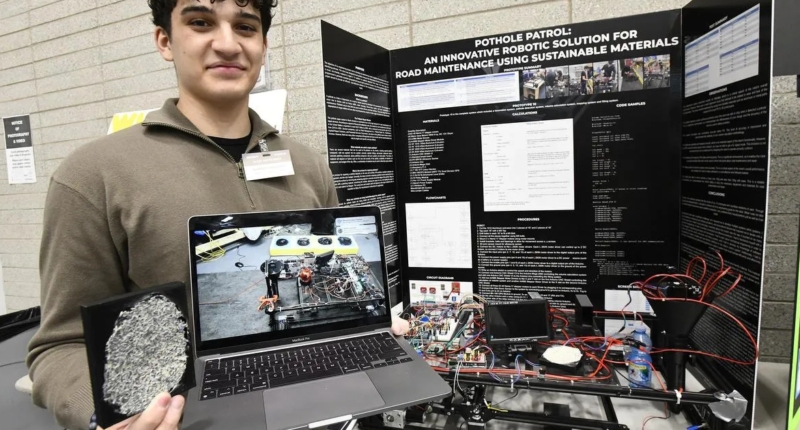The Bay Area Science and Engineering Fair (BASEF) showcased some innovative ideas from students in Hamilton, Halton Region, Haldimand County, Norfolk County, County of Brant, and Six Nations. Bishop Ryan student Anthony Saturnino built an autonomous robot that could identify, measure, and fix potholes. Hillfield Strathallan’s Kadhir Ponnambalam explored the use of tardigrades in drug discovery, while Jordan LeBlanc from St. Matthew Catholic Elementary School created an artificial bee to aid in plant pollination. The event had a total of 222 entries from 283 students, and the winners will be awarded $175,000 in scholarships, cash awards, and trip awards. Due to the COVID-19 pandemic, the BASEF was held online for the past three years, but this year, up to 80% of the competitors attended the in-person event, which was their first after the pandemic. The last in-person BASEF was held in 2019.
Autonomous Robot and Artificial Bees at BASEF 2023
The Bay Area Science and Engineering Fair (BASEF) is a platform where Hamilton-area students showcase their scientific innovations. This year’s BASEF witnessed some incredible ideas that could potentially solve the problems of the community.
One of the standout entries was by Bishop Ryan student Anthony Saturnino. Saturnino built an autonomous robot that could identify, measure, and fix potholes. Equipped with a camera, GPS, and a granular filling apparatus, the robot could locate and fill potholes in a short time. With Hamilton being notorious for its bad roads, Saturnino’s innovation could help the city improve its ranking on CAA’s list of worst roads in Ontario.
Kadhir Ponnambalam, a student from Hillfield Strathallan, explored how tardigrades, a type of aquatic micro-organism, could be used in drug discovery. By generating an electric field, Ponnambalam was able to observe a neuromuscular response in tardigrades. This could potentially replace the use of mice, monkeys, and pigs for drug testing.
Jordan LeBlanc, a Grade 7 student from St. Matthew Catholic Elementary School, created an artificial bee to aid in plant pollination. With the bee hanging from a drone and having a plastic stick and rabbit fur, an electrical charge would cause static in the fur to pick up pollen. When moved to the next plant, the charge would be turned off, and the pollen would be released. This could address the issue of declining bee populations due to mites and climate change, which LeBlanc’s research showed had decreased by 45.5% over the winter from 2021 to 2022.
The BASEF had a total of 222 entries from 283 students in Grades 7 to 12 from Hamilton, Halton Region, Haldimand County, Norfolk County, County of Brant, and Six Nations. The winners will be awarded $175,000 in scholarships, cash awards, and trip awards on Tuesday night. The winners could also move on to participate in the national science fair in Edmonton or the international event, both in May.
Due to the COVID-19 pandemic, the BASEF was held online for the past three years. However, this year, up to 80% of the competitors attended the in-person event, which was their first after the pandemic. The last in-person BASEF was held in 2019.
Don’t miss interesting posts on Famousbio
